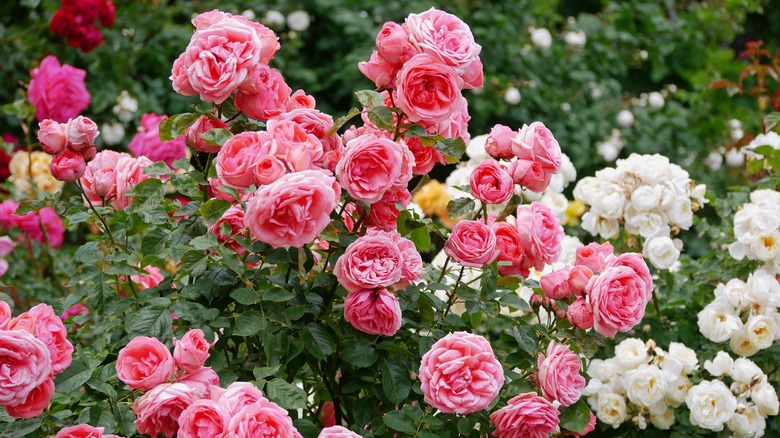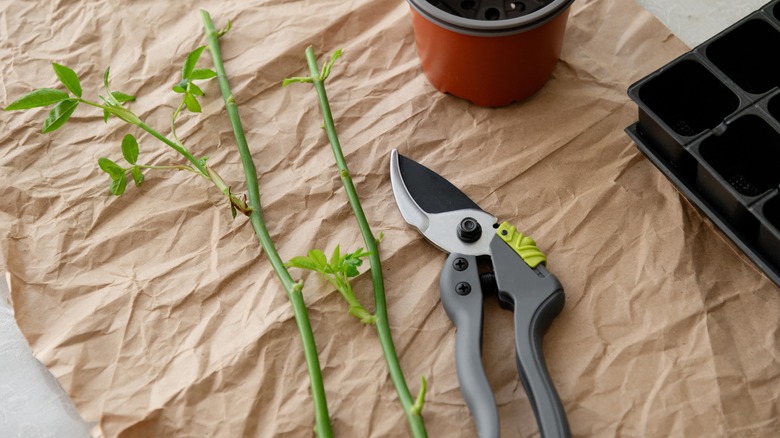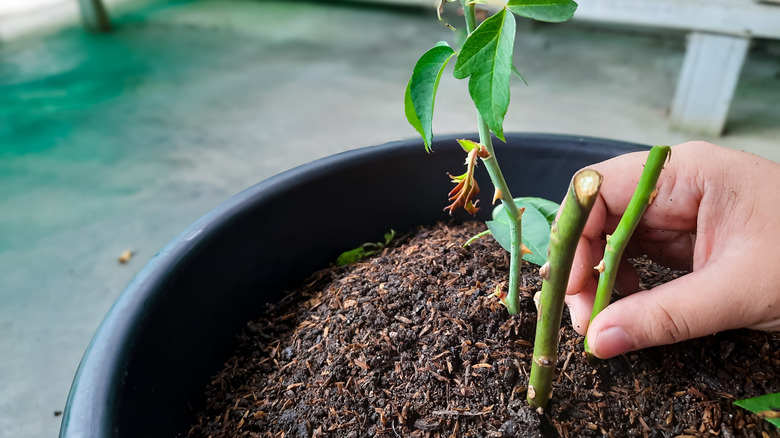Get Endless Roses By Learning How To Propagate
Imagine your outdoor space filled to the brim with stunning roses. These romantic blooms are fragrant, timeless, and elegant, and there is such a wide variety of colors and sizes. There's certainly something special about having a range of roses growing in your garden. The good news? If you've only got one rose bush but want more, you don't have to run to the nursery and spend a fortune to add more of these gorgeous, classic flowers to your outdoor space. You can get endless roses by propagating them.
While growing plants from cuttings may seem intimidating, the process is actually simple, even for those just starting to dabble in hobby gardening. All you have to do is snip some stems, place them in soil, and care for them tenderly until they grow their own roots! Propagating from cuttings gives you the power to multiply your favorite varieties of roses and many other plants without having to buy more every year. If you're ready to make this process a joyful part of growing your healthy garden, you've come to the right place. To enjoy the beauty, creativity, and savings of rose bush propagation, you don't need to set up a greenhouse or use fancy equipment. All you need is a pair of garden shears, a bit of time, and a willingness to get a little dirty.
How to take and plant rose cuttings
For successful rose cuttings, timing is critical. Late spring or early summer are the best seasons to take softwood cuttings, which are the flexible green stems that are the easiest to propagate. Also, take cuttings in the morning when the plant is at its peak level of hydration. When choosing a stem to propagate, make sure it looks healthy, has 5 and 9 inches of growth, is about the width of a pencil, and contains at least three leaf nodes. It's best to use a stem that has just finished blooming. Find several stems that meet these criteria since up to half of the cuttings may not take root. Cut above the bottom set of leaves to remove the stem from the plant.
Snip off the bloom and remove all of the leaves except the top two. This will help encourage the cutting to form roots. Then, trim the remaining stem into multiple cuttings, if possible. Just be sure that each cutting has at least four leaf nodes. Some gardeners slice into the bottom inch of the cutting or dip it into a rooting hormone powder to stimulate root growth.
Place each cutting in a rose-friendly growing medium and ensure two of the cutting's leaf nodes are covered. Moisten the soil and keep the cutting covered with a glass jar or plastic bottle to boost humidity until roots form. Place it in a bright spot for best results. Give the stem a soft pull in two weeks to see if you meet resistance, which means roots are forming!
Mistakes to avoid when propagating roses
Now, let's talk about errors to avoid. The first is letting cuttings sit too long after cutting. Once snipped, you should place the stems in water immediately while you continue cutting other stems from the parent plant. If the stem dries out too much, the possibility of roots forming once planted is much lower. Before you make any snips, be sure you have a vase of water and you've prepared your growing medium in advance. Another common mistake to avoid is improper cutting. Using a dull pair of shears can crush the stem, leaving it susceptible to fungus and bacteria and hindering root development.
Proper care when growing roses in pots is just as important as the cutting process. One of the most common errors during this stage is not providing enough sunlight. Roses need indirect but still bright sunlight when they're establishing roots. Too much direct sunlight leads to premature leaf growth, and if the roots aren't strong, they will have difficulty supporting the new leaves. Another common mistake is planting rose cuttings in improper soil. Roses need moist but well-draining soil, which is why the best soil for roses is a 50/50 mix of perlite and potting soil. This helps to encourage both aeration and drainage for growing roots. Avoiding these mistakes and being consistent with your care routine will ensure your roses flourish and bloom year after year.


